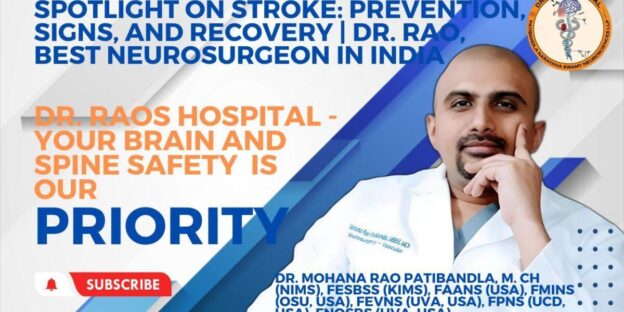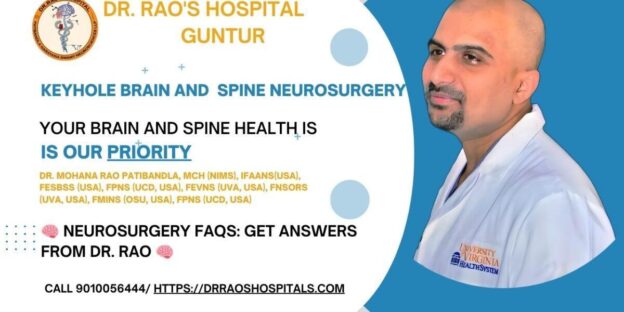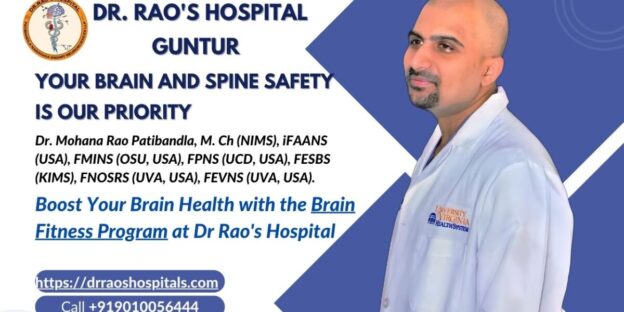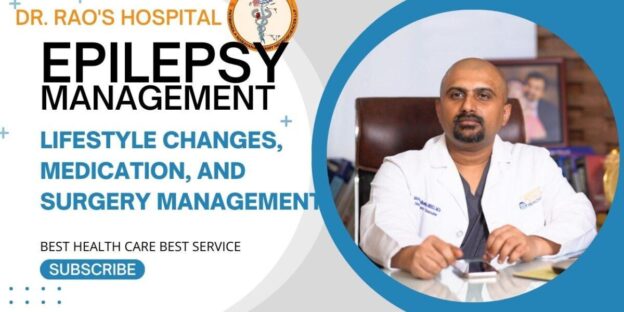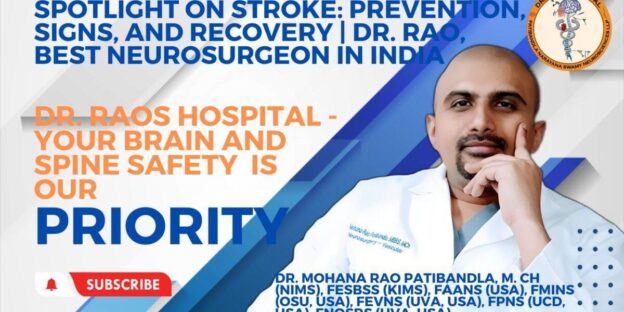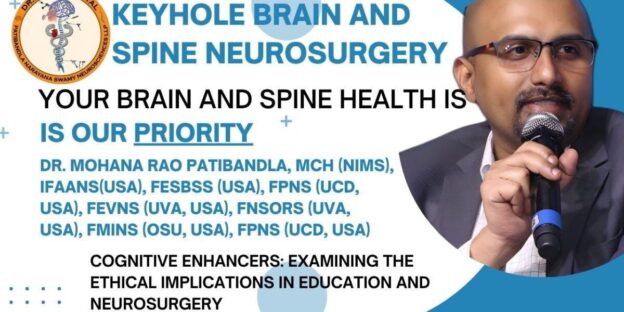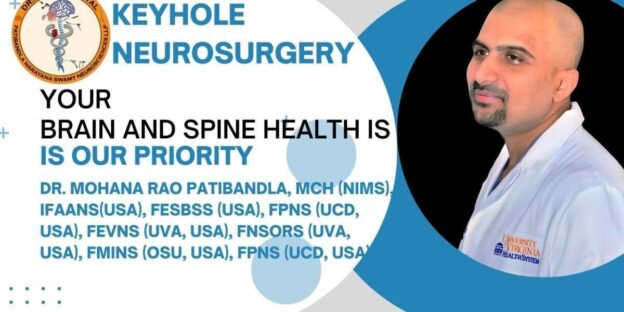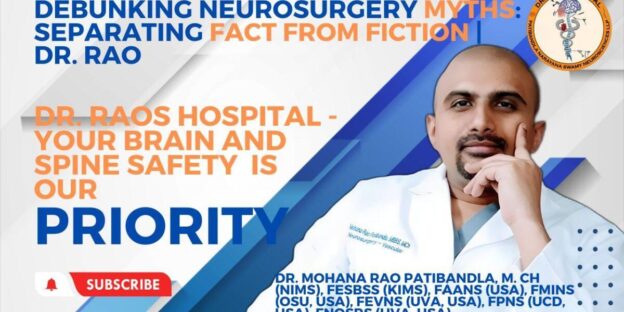Summary: Discover comprehensive answers to the most common questions about strokes in this engaging video by Dr. Rao. From understanding the different types of strokes to learning about effective preventive measures, you’ll find valuable information to safeguard your neurological health.
- What is a stroke, and what are the different types of stroke?
- A stroke is a medical emergency when the blood supply to the brain is interrupted, causing brain cells to die. There are three main types of stroke: ischemic stroke, hemorrhagic stroke, and transient ischemic attack (TIA) 1.
- What are the symptoms of stroke, and how can one recognize them?
- The symptoms of stroke depend on the type and location of the stroke, but they usually come on suddenly and affect one side of the body. Some common symptoms are weakness or numbness in the face, arm, or leg; difficulty speaking or understanding; confusion or trouble with memory; vision problems; dizziness or loss of balance; severe headache; or nausea and vomiting. A simple way to remember the signs of stroke is to use the acronym FAST: Face drooping, Arm weakness, Speech difficulty, Time to call emergency 2.
- What are stroke’s causes and risk factors, and how can one prevent them?
- The leading cause of stroke is atherosclerosis, the buildup of fatty deposits in the blood vessels that supply the brain. This can lead to blockages (ischemic stroke) or ruptures (hemorrhagic stroke) of the blood vessels. Some risk factors for stroke are high blood pressure, high cholesterol, diabetes, smoking, obesity, physical inactivity, heart disease, family history, age, gender, race, and previous stroke or TIA. To prevent stroke, one should adopt a healthy lifestyle: eating a balanced diet, exercising regularly, quitting smoking, managing stress, controlling blood pressure and cholesterol levels, and taking prescribed medications.
- How is a stroke diagnosed and treated?
- Stroke is diagnosed by a physical examination and various tests that can show the type and location of the stroke. Some of these tests are blood tests, electrocardiogram (ECG), computed tomography (CT) scans, magnetic resonance imaging (MRI), carotid ultrasound, cerebral angiogram, or echocardiogram 4. Stroke treatment depends on the type and severity of the stroke, but it usually involves restoring blood flow to the brain and preventing further damage. Some of the treatments are clot-busting drugs (for ischemic stroke), surgery (for hemorrhagic stroke or severe carotid artery narrowing), endovascular procedures (such as stent placement or clot removal), or rehabilitation (to improve function and quality of life) 4.
- What are the complications of stroke, and how can they be managed?
- Stroke can cause various complications, such as brain swelling, bleeding, infection, seizures, depression, cognitive impairment, communication problems, physical disability, pain, and blood clots. Different methods can manage these complications, such as medication, surgery, rehabilitation, counseling, and preventive measures.
- How long does it take to recover from a stroke, and what factors affect the recovery process?
- The recovery time from a stroke varies depending on the type and severity of the stroke, the extent of brain damage, the age and health of the patient, and the quality of care and rehabilitation. Some people may recover within weeks or months, while others may take years or never fully recover. The recovery process can be affected by factors such as motivation, support, coping skills, and adherence to treatment 12.
- What are the best exercises for stroke recovery, and how often should they be done?
- The best exercises for stroke recovery target the affected body areas and improve strength, coordination, balance, and mobility. Some examples are stretching, range-of-motion exercises, aerobic exercises, resistance training, functional tasks, and recreational activities. The frequency and intensity of exercises depend on the individual’s condition and goals, but generally, they should be done at least three times a week for 20 to 60 minutes per session 13.
- What are some tips for caregivers of stroke survivors, and where can they find support?
- Caregivers of stroke survivors play a vital role in the recovery process and need to take care of themselves and their loved ones. Some tips for caregivers are: learn as much as possible about stroke and its effects; communicate openly and respectfully with the stroke survivor and the health care team; seek help from family, friends, or professionals when needed; join a support group or online community for caregivers; practice self-care by eating well, sleeping enough, exercising regularly, and managing stress; and celebrate small achievements and milestones 14.
- What are some common myths and misconceptions about stroke, and why are they wrong?
- Some common myths and misconceptions about stroke are: stroke only affects older people; the stroke is not preventable; stroke symptoms always go away quickly; stroke recovery stops after six months; stroke survivors cannot lead an everyday life; and stroke is not a severe condition. These myths are wrong because stroke can affect anyone at any age; most strokes can be prevented by controlling risk factors; stroke symptoms can last for hours or days or become permanent; stroke recovery can continue for years with proper treatment and rehabilitation; stroke survivors can achieve a high quality of life with appropriate support and adaptation; and stroke is a leading cause of death and disability worldwide 15.
- What are the long-term effects of stroke, and how can they be managed?
- The long-term effects of stroke depend on the type and severity of the stroke, the area of the brain affected, and the extent of recovery. Some possible effects are physical disability, cognitive impairment, communication problems, emotional changes, personality changes, behavioral changes, and social isolation. These effects can be managed by various methods, such as medication, rehabilitation, counseling, support groups, and adaptive devices 123.
- How can I cope with the emotional and psychological impact of a stroke?
- A stroke can be a traumatic and stressful experience affecting your mood, self-esteem, and outlook. You may experience various emotions, such as shock, denial, anger, sadness, fear, anxiety, guilt, or depression. These emotions are normal and understandable but can interfere with recovery and well-being. To cope with the emotional and psychological impact of stroke, you can try some of the following strategies: seek professional help from a mental health provider; join a support group or online community for stroke survivors and caregivers; talk to your family and friends about your feelings and needs; practice relaxation techniques such as deep breathing, meditation, or yoga; engage in enjoyable activities that make you happy; set realistic and achievable goals for your recovery; focus on your strengths and achievements; and maintain a positive attitude 123.
- What is a comprehensive stroke center?
- A comprehensive stroke center is a type of hospital that meets the highest standards of care for stroke patients. It can treat the most complex and severe stroke cases, such as large ischemic strokes, intracerebral hemorrhage, and subarachnoid hemorrhage1. A comprehensive stroke center has the following features2:
- Availability of advanced imaging techniques, such as Angiogram, perfusion imaging, CT
- Availability of personnel trained in vascular neurology, neurosurgery, and endovascular procedures
- 24/7 availability of personnel, imaging, operating room, and endovascular facilities
- ICU/neuroscience ICU facilities and capabilities
- Experience and expertise in treating stroke patients
- Use of data to assess and improve the quality of care for stroke patients
- A comprehensive stroke center is different from a primary stroke center. This hospital meets the basic standards of care for stroke patients but does not have the same level of resources and expertise as a comprehensive stroke center1. A comprehensive stroke center can offer more specialized and advanced treatments for stroke patients, such as IV tPA, mechanical thrombectomy, and neurocritical care2.
- What is the best stroke center in Guntur capable of doing all the services needed for stroke?
- Dr. Rao’s hospital is one of the best neurology hospitals in Guntur, Andhra Pradesh, that offers stroke and cerebrovascular treatment1. They have a team of experienced neurosurgeons and interventional neuro specialists, led by Dr. Mohana Rao Patibandla, considered the best neurosurgeon in Andhra Pradesh1. They provide advanced treatments for stroke, such as IV tPA, mechanical thrombectomy, and neurocritical care123. They also have a high success rate and patient satisfaction. Dr. Rao’s hospital might be a good option if you are looking for a comprehensive stroke center in Guntur.

